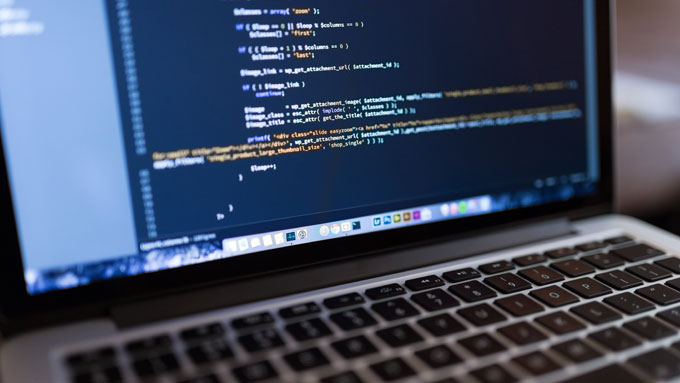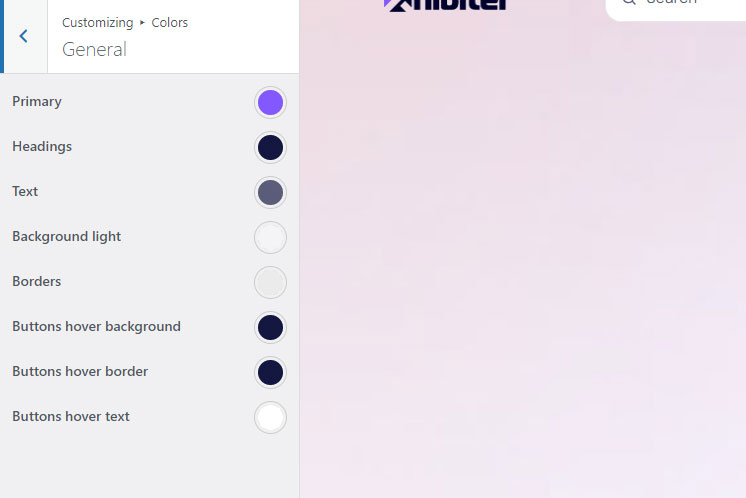Ever wondered how to create an impressive website without needing any coding skills? Enter WordPress, the world’s most popular content management system (CMS) that powers over 43.1% of websites globally.
Thanks to its intuitive interface and wide availability of themes and plugins, anyone can build a stunning website tailored to their unique needs.
In this blog post, we will guide you through the ins and outs of WordPress, demonstrating how you can create your own professional website with ease, and explaining how WordPress works.
From understanding the basics to optimizing your site for better search engine rankings, this comprehensive guide will cover everything you need to know about WordPress and how it works.
Whether you’re a small business owner, an aspiring blogger, or just curious about the platform, this guide will help you navigate the world of WordPress and achieve success with your website. So, let’s dive in and explore the wonders of WordPress!
Key Takeaways
- WordPress is an open-source content management system used to create a wide range of websites.
- With the right themes, plugins, and customization options, WordPress can be optimized for improved user experience and higher search engine rankings.
- Security measures must also be implemented alongside regular maintenance to ensure optimal performance on your WordPress site.
Understanding WordPress: The Basics

WordPress is a powerful and versatile content management system (CMS) that allows you to create and manage websites with ease.
Its popularity stems from its simple yet feature-rich interface, making it an ideal choice for users of all skill levels.
From self-hosted WordPress sites to fully managed options, there’s a solution for everyone. With a vast community of developers and users, WordPress has become the go-to website builder for millions of people around the world.
Its open-source nature means that anyone can use WordPress to build their website, regardless of their technical background. Some examples of websites that can be created with WordPress include:
The possibilities are endless with your WordPress blog.
Wondering why WordPress is so popular? We’ll explore the fundamentals of this robust platform to understand its workings.
What is WordPress?
At its core, WordPress is an open-source content management system (CMS) that allows users to create a wide range of websites without any coding knowledge. This platform has come a long way since its inception as a blogging tool in 2003, now powering numerous types of websites, including blogs, portfolios, business websites, and eCommerce stores.
With its customizable themes and plugins, you can create your own website, personalized and functional, to suit your specific needs.
One of the key advantages of WordPress is its user-friendly interface. Whether you’re setting up a simple blog or a complex online store, WordPress makes it easy to manage your content, customize your site’s appearance, and even add advanced features such as analytics and contact forms.
Plus, with the option to go for a self-hosted WordPress site, you have even more control over your website and its features. It’s no wonder that WordPress has become the go-to choice for millions of website owners worldwide.
WordPress Popularity
WordPress’ popularity is truly unmatched, boasting a usage rate of 43.1% across all websites, making it the most popular CMS in the world. Its reliability and wide support make it an attractive option for users of all skill levels.
But it’s not just small businesses and individuals that rely on WordPress for their online presence; even major brands like Time Magazine, Facebook, and Sony trust the platform for their websites.
The vibrant WordPress community plays a significant role in the platform’s success, with thousands of users, developers, and businesses contributing to its growth.
From the WPBeginner Engage group on Facebook, boasting over 90,000 members, to local meetups and WordCamps held worldwide, the WordPress community is always ready to offer support, share knowledge, and collaborate on projects.
With such a strong support network, it’s easy to see why so many people choose WordPress for their website needs.
How WordPress Functions

Having grasped what WordPress is and why it’s popular, we can now delve into its functioning. At its core, WordPress consists of several components that work together to power your website.
These include a database system to store your content, themes to define the appearance of your site, and plugins to extend its functionality.
We’ll dissect these core components and explain their roles in your WordPress site’s overall functionality. From understanding the purpose of themes and plugins to navigating the user-friendly interface, we’ll provide you with the knowledge you need to get the most out of your WordPress experience.
Core Components of WordPress

The foundation of any WordPress website lies in its core components, which include:
Database: where all your website’s content and settings are stored, ensuring that your site runs smoothly and efficiently
Themes: the design and layout of your website, including its appearance and functionality
Plugins: additional software that adds specific features and functionality to your website
These core components work together to create a powerful and customizable website.
Themes, on the other hand, are pre-designed templates that determine the appearance and layout of your website. With thousands of themes available, you can easily find one that aligns with your brand and purpose.
Plugins act as extensions to your WordPress website, adding specific features and functionalities that are not included in the core software. From SEO optimization to contact forms and social media integration, there’s a plugin for almost anything you can imagine.
By understanding and utilizing these core components, you can create a fully functional and customized WordPress website that caters to your unique needs.
The User Interface (UI)
One of the most appealing aspects of WordPress is its user-friendly interface, designed to make managing your website a breeze. The WordPress user interface (UI) comprises elements such as:
The editor
The dashboard
Menus
Settings
These elements provide users with the necessary tools to create, manage, and organize their website files and content with ease.
The intuitive nature of the WordPress UI means that even those with no prior experience can quickly learn how to navigate and customize their site.
From creating and editing pages and posts to adjusting the appearance and functionality through themes and plugins, the WordPress UI puts you in the driver’s seat, allowing you to take full control of your website and its content.
Customizing Your WordPress Website

Having covered the basics of WordPress and its core components, let’s embark on the thrilling journey of customization. Customizing your WordPress website involves:
Selecting and modifying themes
Adding and configuring plugins
Adjusting settings and options
Customizing the layout and design
Adding custom code or scripts
By customizing your WordPress website, you can achieve the desired look and functionality, ensuring that your website stands out from the crowd and caters to your specific needs.
In this section, we will explore the process of customizing your WordPress website. This includes:
Choosing the right themes and plugins
Tweaking them for optimal performance
Selecting a visually appealing design
Adding advanced features and functionalities
We’ll provide you with the tools and knowledge you need to create a truly unique and engaging WordPress website.
WordPress Themes
Themes play a crucial role in the overall appearance and layout of your WordPress website. With thousands of WordPress themes, both free and premium, available, you can easily find a design that aligns with your brand and purpose.
When selecting a theme, it’s important to consider factors such as compatibility, responsiveness, and feature set, ensuring that your chosen theme meets your specific needs.
Once you have selected and installed a theme, customizing it is usually a straightforward process, with most themes offering a range of customization options, such as color schemes, font choices, and layout settings.
By taking the time to choose the right theme and customize it to your liking, you can create a visually appealing and functional WordPress website that captivates your audience and keeps them coming back for more.
Useful tip: To find what WordPress theme a website is using you can use the WordPress theme detector tool.
Plugins
While themes dictate the appearance of your WordPress website, plugins are responsible for adding specific features and functionalities. The WordPress plugin repository boasts over 59,750+ plugins, covering everything from:
SEO optimization
Contact forms
Social media integration
eCommerce functionality
And much more!
When selecting plugins for your WordPress website, it’s important to consider factors such as compatibility, support, and updates, ensuring that your chosen plugins are reliable and well-maintained.
Additionally, it’s crucial to avoid overloading your site with unnecessary plugins, as this can lead to performance issues and conflicts.
By carefully choosing and managing your plugins, you can create a powerful and functional WordPress website that caters to your unique needs and requirements. To enhance your website’s functionality, it’s essential to install plugins that align with your goals.
Building a WordPress Website

Armed with an understanding of WordPress, its core components, and customization options, you’re equipped to start building your unique WordPress website.
This process involves obtaining a domain name and hosting, installing WordPress, and creating pages and posts for your site.
In this section, we will guide you through the steps involved in building a WordPress website, from choosing the right domain name and hosting provider to installing WordPress and creating engaging content.
With the right tools and knowledge, you can create a professional and fully functional WordPress website that captures the attention of your audience and helps you achieve your goals.
Domain Name and Hosting
A domain name and web hosting are the essential building blocks of any WordPress website. Your domain name serves as your website’s unique address on the internet while hosting refers to the physical space on a server where your website’s files are stored.

Many hosting providers offer affordable options for domain registration and hosting, with some even including a free domain name with their plans.
The important factors to consider when choosing a hosting provider are uptime, customer support, and compatibility with WordPress.
WP Engine, Cloudways, Bluehost, and Kinsta are some of the most popular WordPress hosting providers. Their high-quality services make them a go-to choice for many.
By selecting the right domain name and hosting provider, you can ensure that your WordPress website has a strong foundation for success.
Install WordPress
Once you have secured your domain name and hosting, the next step is to install WordPress on your hosting environment. Installing WordPress is typically a simple process, with most hosting providers offering one-click installation options, making it easy for even beginners to get started.
In some cases, you may need to follow a manual installation process, which involves downloading the WordPress software and uploading it to your hosting account. However, this is generally a straightforward procedure, with detailed instructions available on the WordPress.org website.
With WordPress installed, you’re now ready to create pages, posts, and customize your site to your liking.
Creating Pages and Posts

Creating pages and posts in WordPress is an essential part of building your website, allowing you to add and manage content easily. To create blog posts or new pages, simply navigate to the WordPress dashboard, select the appropriate option (Pages or Posts), and click Add New.
From there, you can enter a title, add content, and even insert media such as images and videos. WordPress also offers a variety of formatting options and blocks to help you create visually appealing and engaging content for your site.
With the ability to create an unlimited number of pages and posts, you have complete control over your website’s content and structure, ensuring that your site stays fresh and up-to-date with the latest information.
Optimizing Your WordPress Site
For optimal performance and high search engine rankings, it is vital to optimize your WordPress website for both aspects. This involves implementing various techniques and strategies, such as:
Keyword research
Proper permalink structure
Image optimization
Improving site performance through caching and minification
We’ll investigate the process of optimizing your WordPress website for enhanced user experience and improved search engine rankings in this part. By following these best practices and utilizing the right tools and plugins, you can maximize your site’s potential and drive more traffic to your content.
SEO Techniques
Search engine optimization (SEO) is a crucial aspect of any successful website, and WordPress is no exception. By implementing SEO techniques such as keyword research and proper permalink structure, you can improve your site’s visibility in search engine results and drive more organic traffic to your content.
There are several WordPress plugins available to help you with your SEO efforts, such as RankMath, which is used by over 2.18+ million websites. By utilizing these plugins and following best practices for on-page SEO, such as creating unique and engaging content, optimizing your site’s meta tags, and incorporating relevant keywords throughout your content, you can improve your site’s search engine rankings and attract more visitors.
Performance Optimization

In addition to SEO, it’s essential to optimize your WordPress site’s performance to ensure a fast and seamless user experience. Performance optimization involves various techniques, such as image compression, caching, and minification, which can help improve your site’s loading speed and overall responsiveness.
There are numerous plugins and tools available to help you with performance optimization, such as WP Rocket, a popular caching plugin designed to enhance website speed. By regularly monitoring your site’s performance and employing these optimization techniques, you can ensure that your WordPress website runs smoothly and efficiently, providing a positive user experience for your visitors.
WordPress Security and Maintenance
Securing and maintaining your WordPress site is fundamental in safeguarding your website and its data. This involves implementing security measures, such as SSL certificates and regular updates, as well as conducting routine maintenance tasks, such as monitoring site health and updating themes and plugins.
In this section, we will discuss the importance of security and maintenance for your WordPress site and provide you with practical tips and strategies for keeping your site safe and up-to-date. By following these best practices, you can protect your site from potential threats and ensure that it continues to run smoothly and efficiently.
Security Measures
Implementing security measures is vital for protecting your WordPress site from potential threats, such as malware, hacking attempts, and data breaches. Some essential security measures include installing an SSL certificate, which encrypts data transmitted between your site and its visitors, and keeping your themes and plugins up-to-date to protect against known vulnerabilities.
There are several security plugins available to help you safeguard your WordPress site, such as Wordfence, a popular plugin designed to protect your site from malicious hacking attempts. By implementing these security measures and regularly monitoring your site for potential threats, you can ensure the safety and integrity of your WordPress site and its data.
Regular Maintenance

In addition to security, regular maintenance is essential for keeping your WordPress site running smoothly and securely. This involves updating your themes and plugins at least once a week, as well as monitoring your site’s health using tools and plugins such as Health Check & Troubleshooting.
Regular maintenance not only helps to prevent potential security issues but also ensures that your site remains optimized for performance and user experience. By staying on top of updates and monitoring your site’s health, you can tackle any issues that may arise and keep your WordPress site in tip-top shape.
Real-Life Examples of WordPress Websites
To demonstrate the versatility and adaptability of WordPress, let’s take a look at some real-life examples of WordPress websites. From small businesses and service-based entrepreneurs to renowned publications and major brands, these examples showcase the wide range of website types and styles that can be achieved using the WordPress platform.

Some notable examples include Time Magazine, Facebook, and Sony, all of which rely on WordPress for their online presence. Other examples include Airstream, a trailer business that uses WordPress to showcase its products, and Sona Mantri, an interior designer who displays her work on a one-page WordPress site.
These examples illustrate the diverse range of websites that can be built using WordPress, proving that the platform is suitable for virtually any purpose or industry.
Tips for WordPress Success
Success with your WordPress site goes beyond merely creating and customizing your website. Optimizing your settings, choosing suitable themes and plugins, and keeping abreast of the latest WordPress developments is crucial. Some tips for success include:
- Regularly monitoring your site’s performance
- Utilizing a caching plugin
- Optimizing images
- Employing a content delivery network (CDN) for optimal performance optimization.
Additionally, staying informed of the latest WordPress advancements is crucial for staying ahead of the curve. You can subscribe to WordPress blogs, follow WordPress on social media, and attend WordPress events to keep up-to-date with the latest news and trends. By following these tips and implementing the strategies discussed in this guide, you can achieve success with your WordPress site and make your mark on the digital landscape.
Summary
In conclusion, WordPress is a powerful and versatile platform that enables users of all skill levels to create stunning and functional websites. From understanding the basics and customizing your site to optimizing for SEO and performance, this comprehensive guide has provided you with the tools and knowledge needed to succeed in the world of WordPress.
As you embark on your WordPress journey, remember that the key to success lies in continuous learning and improvement. Stay informed, experiment with new techniques, and never be afraid to ask for help from the vibrant WordPress community. With dedication and persistence, you can achieve your goals and create a truly exceptional WordPress website.
Frequently Asked Questions
How WordPress works step by step?
WordPress setup is a simple process, starting with choosing web hosting and a domain name and ending with customizing settings, creating pages, and optionally importing demo content and writing your first blog post. Install a WordPress theme, add plugins, and you’ll have a fully functional website in no time.
How does WordPress work?
WordPress is a content management system (CMS) and website builder that allows anyone to create any kind of website imaginable. It has a database system, plugin architecture, and a template system for customizing the website. It was first released in 2003 and has since grown into one of the most popular CMS solutions available.
How do I use WordPress for the first time?
To use WordPress for the first time, select a domain name and purchase hosting, install WordPress, choose a theme and plugins, configure your settings, and publish content and a menu.
What types of websites can be created using WordPress?
WordPress offers the flexibility to create many types of websites, such as blogs, portfolios, business websites, and eCommerce stores.
How can I optimize my WordPress site for search engine rankings?
You can optimize your WordPress site for search engine rankings by utilizing SEO plugins, improving your site speed, doing keyword research, and setting up a proper permalink structure.
If you enjoyed this article check our other guides:




